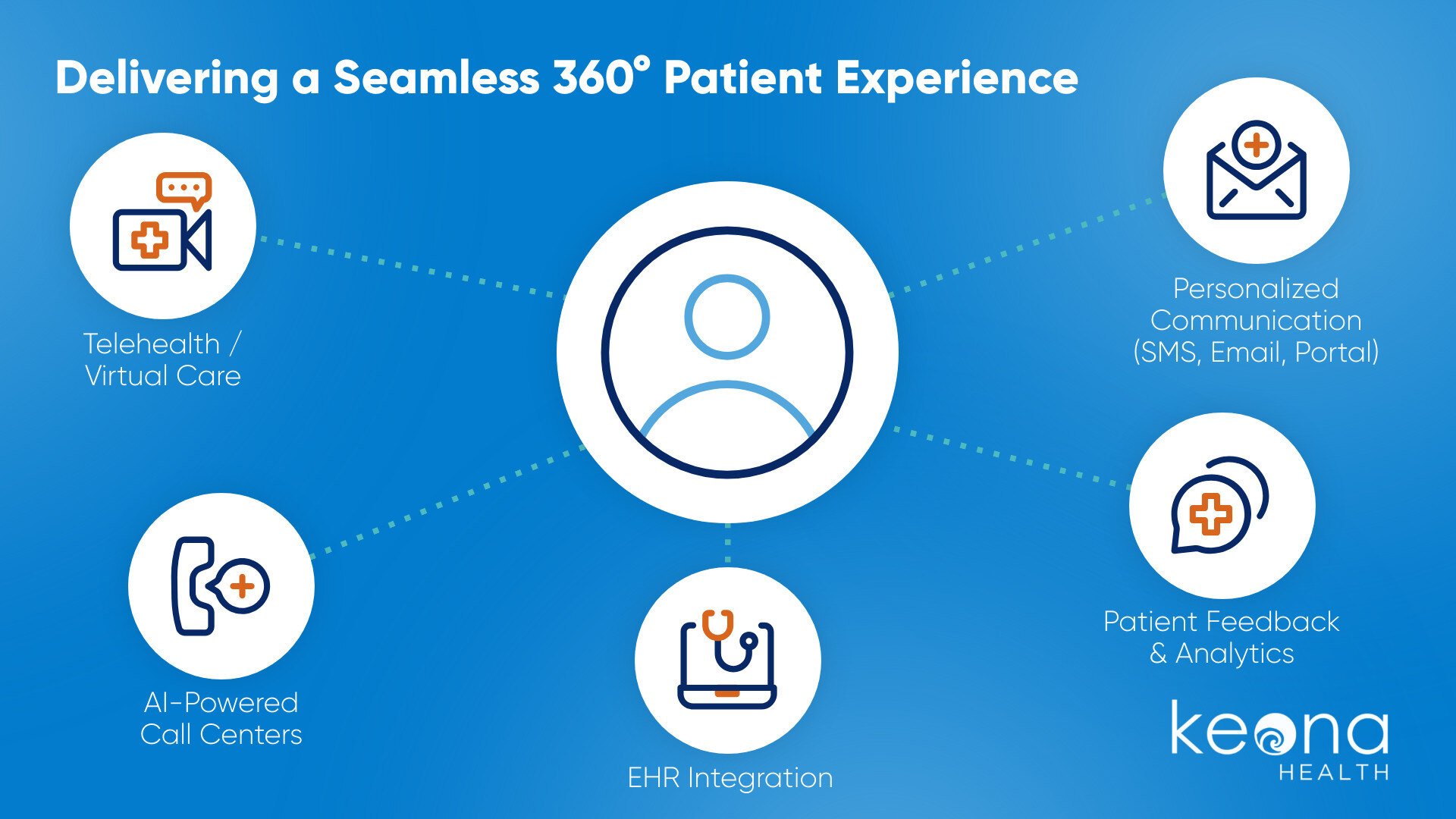
Why the Staffing Trap cripples your patient engagement strategy
You wait for a patient to arrive for their appointment. But the patient doesn’t show up. Then another patient doesn’t show up. Then another patient shows up for their first appointment, but misses their follow-up appointment. Then another patient shows up for both their appointments, but they don’t adhere to their treatment plan, so they must schedule a new appointment, which they don’t show up for. Meanwhile, dozens of other patients call relentlessly to bombard your staff with questions about their care and their bills and their appointments. We call this nightmare “Engagement Depravement.”
If your organization suffers from Engagement Depravement—meaning, you need to more effectively engage your patients, but you lack the staffing numbers to manually facilitate this engagement—then sadly, you're stuck in the “Staffing Trap.” The Staffing Trap pummels healthcare organizations’ efforts to improve patient engagement because it creates:
- Excessive no-shows, late arrivals, and cancellations.
- Poor communication with patients, no "patient activation," and low health literacy.
- Ineffective care coordination and patient data management.
You've likely already experienced the consequences of these problems:
- Severe patient leakage and diminished revenue.
- Disconnected care, disgruntled patients, and unhappy providers.
- Potential health hazards and patient safety risks.
You may have tried to solve your patient engagement problems, as do many healthcare providers, by manually engaging your patients. But this never works because it's too extreme a workload—that requires endless data-entry—for your staff to handle. This manual misery, so to speak, is to blame for the disintegration of countless healthcare organizations' patient engagement systems.
To achieve your goals of maximum profitability, of fruitful patient-provider relationships, and of streamlined operations, then you must escape the Staffing Trap. When you break free from the Staffing Trap, you reap the big benefits of enhanced patient engagement:
- Better patient outcomes and secured patient safety.
- Boosted revenue and effortless care coordination.
- Revitalized provider satisfaction.
Retail engagement vs. transformational engagement
There are two types of engagement: retail engagement and transformational engagement. Transformational engagement describes your engagement system’s core procedures—its bedrock—upon which retail engagement is built. Your retail engagement efforts will collapse if you don’t first construct a reliable foundation.
To create this transformational groundwork, follow these steps:
- Make patients feel like they’re developing a relationship with your entire organization. Don’t make patients repeat themselves. Keep unified records of all prior calls, not just doctors visits, but billing issues, scheduling, and any prior phone calls or website requests. It needs to be visible and summarized right at your agents’ fingertips. Patients feel like they’re developing a relationship with you when the person on the phone interacts with them in a way that shows familiarity with their history.
- First contact resolution. Cross-train your phone staff to handle any patient request. This alleviates patients’ biggest frustrations: getting forwarded and waiting on hold, repeating their story, or heaven forbid, playing phone tag after already waiting on hold.
These patient frustrations are also expensive for your organization, because they lead to excessive outbound and inbound calls. Cross-training will be costly and time-consuming unless you simplify all your services through a Standard Modular Flow, an innovative technique that we discuss in deeper detail on our Staffing Resources Page. - Easy self-service and automated follow-up. Patients may not listen to your message until 6:30pm and must take action right then. Which is why you should allow self-service and send SMS links. This way, patients get answers immediately or can schedule appointments themselves at their convenience.
These transformational techniques will form the bedrock of your patient engagement system. After you’ve built these practices into your operation, you can then implement the following retail engagement strategies.
7 retail strategies for improving patient engagement at your healthcare organization
#1: Automate appointment reminders & patient education
Building automated appointment reminders and rescheduling links into your engagement apparatus is a simple and cheap way to reduce no-shows and missed appointments. You can also automate post-appointment patient educational outreach, which gets your patients more involved in their own health and thus likelier to be healthier and happier.
For example, after a patient has an appointment with their doctor, your system would automatically send the patient a follow-up email and text message with personalized educational material about the care they received, and any information about follow-up appointments.
To get the most out of this automation, you should also:
- Setup automated feedback loops to continually measure and improve services.
- Generate automated reports of patient interactions to help identify areas that need improvement.
#2: Deliver personalized care experiences
Create an online patient portal that empowers your patients to self-schedule their appointments and to securely access their health records and get personalized recommendations.
Also, leverage your data and analytics to better understand each patient's individual needs and preferences. This way, you can more effectively engage them in a manner relevant to their own health.
For instance, a 20-year-old female with an autoimmune disease obviously requires different engagement than an 80-year-old male with high blood pressure. When you personalize care for the wide variety of patients you serve—by leveraging your analytics—this enhances both patient satisfaction and health outcomes.
#3: Engage patients via surveys & other provider-patient communication strategies
Offer your patients an online survey after their office visit. These surveys help your team better understand each patient’s experience so you can continuously improve your patient engagement efforts.
Questions on the survey could range from:
- The patient’s in-office experience.
- If the patient’s needs were addressed in a timely manner.
- If the patient felt comfortable communicating their concerns with your team.
To improve provider-patient communication outside the office, also implement a secure messaging system. This system should include:
- Automated two-way communication between healthcare teams and patients.
- Voice recognition technology to assist patients with health related queries, including symptoms, in a more efficient and secure manner.
#4: Offer your patients health literacy resources
Utilize a literacy platform like Health Literacy Online. This platform gives patients information about their condition and care in plain language, as well as videos and quizzes. Patients can use these tools to better understand their situation and how to manage it. Additionally, healthcare professionals can teach classes on the platform.
#5: Offer your patients shared decision-making opportunities via virtual reality
You should consider utilizing virtual reality tools to enhance patient engagement. For example, a patient considering elective surgery could use a VR tool to take a 3D tour of the procedure before making a decision. This empowers your patients to collaboratively work with your organization to design the best treatment plan. Your patients won't feel “in the dark.”
Another suggestion: leverage smart algorithms to provide timely notifications to your team when patients need extra attention or assistance.
#6: Engage patients consistently throughout aftercare
An excellent way to accomplish this are mobile apps—either your own or shared apps like Healow—which your patients can use to easily connect with their doctor throughout their recovery process and even dispute any errors in their bill or insurance paperwork. Patients can also set reminders for taking medications or completing necessary health-related tasks, such as scheduling regular check-ups.
Finally, your organization should implement health tracking systems that enable your patients to monitor their progress over time.
#7: Provide continuous care & support
Continuous care and support builds trust and loyalty. Your health system should create digital social networks within each of your specific patient communities, so that people facing similar health challenges have a safe and reliable way to communicate with one another.
For example, your organization can set up online forums or chat rooms—usually on social media networks such as Facebook or Twitter—where patients discuss their care experience with other individuals receiving similar treatments. This provides a platform for people to ask questions and share insights, enabling them to better understand their condition and thus stay deeply engaged in their healthcare.
Your liberation from the Staffing Trap helps everybody
When you escape the Staffing Trap and utilize the patient engagement strategies above, you'll push forward the entire American health system, which suffers the most dismal engagement rates in the developed world. We all must do our part to modernize patient access in the United States—and it starts with effectively engaging patients.
To take an in-depth dive into the most critical issues facing healthcare staffing and how to solve them ==>
Posted By

Peter Black is an author, consultant, and digital health expert based in Los Angeles. He received his master’s degree from UCLA.
Related Post
June 17, 2024
the state of patient service in 2025 maria had grappled with shortness of breath for...



